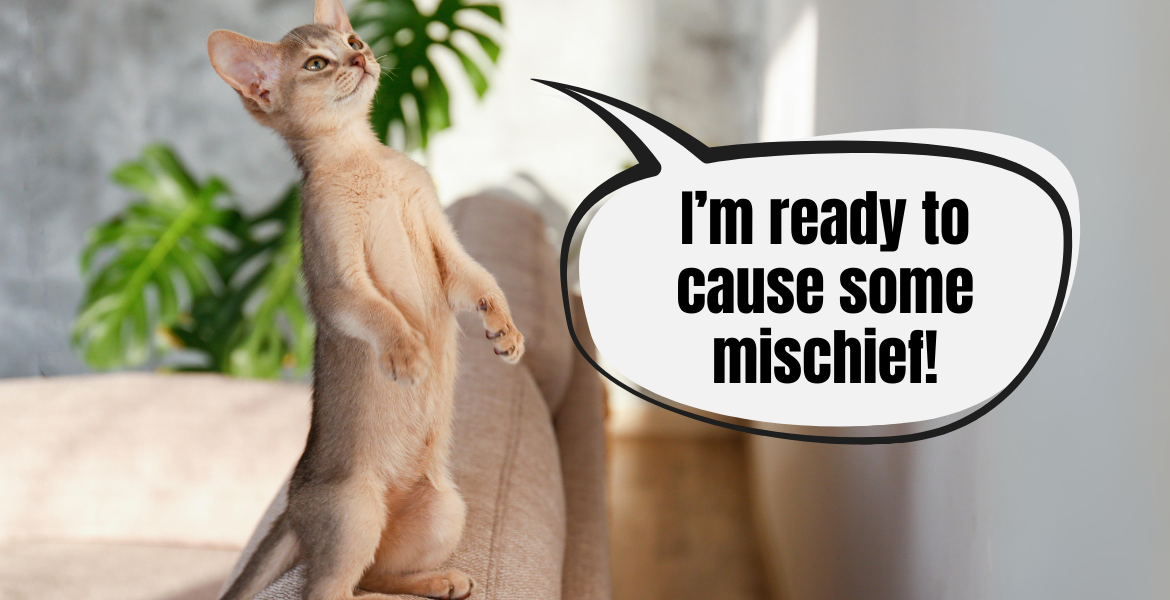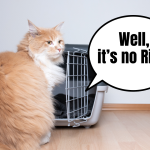Have you ever heard, fabCats, about childproofing, which involves preparing the home to be safe for children? Just like little humans, young kittens are naturally incredibly curious and will joyfully stick their noses and paws everywhere – even where they shouldn’t. So when we’re planning to introduce a kitten into the home, solid kitten-proofing is essential. But what is it all about?
For us, cat Guardians, it’s sometimes hard to imagine the troubles our furballs, especially the youngest ones, can get into. After all, their view of the world is completely different from ours, and we are aware of only so much. However, certain aspects are worth remembering, and today at myKotty, we’ll discuss them 
What is kitten-proofing?
A small body, untamed energy, and innate curiosity about the world – with such a set of traits, little kittens are designed to get into all sorts of trouble. After all, kittenhood is the best time to explore the world with all senses, test their ability to squeeze into the smallest crevices and sharpen their claws on every possible surface. Your role as a Guardian will be, of course, to create an attractive environment for the kitten where it can unleash its imagination safely. And that’s what kitten-proofing is all about.
The essence of kitten-proofing is the preparation, securing, and arranging of the home space so that a cat, whether young or adult, can move around it safely while fulfilling their key needs. It involves looking at the apartment from a cat’s perspective, understanding what will be an attractive place for hiding, climbing, or playing for a small feline. On one hand, kitten-proofing ensures the safety of your cat, and on the other, it helps you protect your furniture, household equipment, and valuable items from destruction. Everyone benefits from it.
What to pay attention to during kitten-proofing?
The process of securing the apartment due to the presence of a young kitten can be divided into 5 basic areas:
- Overall interiors. Here, we’ll pay attention to the organization of space in the apartment so that the kitten doesn’t have potential escape routes or options to get stuck in various cracks and crevices. Pay attention to uncovered ventilation openings, hinged windows (make sure to secure them with a net), spaces around the fireplace, and the possibility of the cat squeezing behind kitchen furniture. Usually, it’s easier to secure such places in advance than to try to extract a stressed-out kitten from them later.
- Household equipment. An open washing machine, dishwasher, unlocked cabinets, and drawers, space under the bed, and the sofa – every element of household equipment is worth analyzing for potential hazards. If, by chance, you close the cat in the bathroom or bedroom, they will certainly let you know about it loudly. It will be worse if the cat gets wedged in a cabinet and you happen to leave for work. Or if they jump unnoticed into the washing machine, and you start it without checking first. We’ve heard many sad stories, so we adhere to the principle: you can never be too careful with kittens.
- Strings, cables, ribbons, and anything a cat can potentially get tangled in or want to swallow. We’re not saying that cats are clumsy, but strings are especially interesting to them. If your cat decides to jump to the beads that regulate the blinds, chew on the cables hanging behind the desk, or taste ribbons left on the surface after unwrapping presents, it could end badly for them.
- Trinkets. Both valuable and less important ones – if there’s even a slight chance that the cat could swallow, chew, or knock over something, keep it out of reach of curious paws.
- Potentially poisonous and toxic things. This includes both our human food, which the cat shouldn’t touch, as well as household plants, chemicals, medicines, and cosmetics. If possible, move them where the cat won’t have access. As for plants, you don’t have to give up your home jungle. However, make sure that all flowers and green plants in the house are safe and non-toxic for the cat – the ASPCA website is your best guide.
How to prepare the apartment to be safe for a cat?
You already know the basics, so all that’s left is to create a list from which you can check off all the tasks you’ve completed. So let’s get down to specifics:
- Secure doors, windows, and balconies. You can install a net yourself or use the services of companies that specialize in this. If you use hinged window options, also look for a net that will secure the hinged window so that the cat cannot get stuck in the gap.
- Close off dangerous hiding places. Cats love to hide – not only when they’re scared but also when they just want to rest. However, it’s good to know where the cat is hiding – in case of danger, you must be able to extract the cat and escape quickly. So look around the house for any cracks, holes, and nooks where the cat can potentially squeeze in. They can be really small, but it won’t be an obstacle for a motivated cat.
- Check curtains, drapes, and blinds. If you like to cover windows in this way – go ahead! However, keep in mind that the cat may want to climb your curtains, and if they enjoy the game, it will be hard to deter them from such an idea. If your cat is also a fan of window climbing, secure the cords you use to operate the blinds and remember to trim your cat’s claws so they won’t get caught in the curtains without being able to free themself from trouble.
- Hide small items. All needles, pins, threads, ribbons, strings, rubber bands, hairpins, knives, glass objects that the cat could knock over, and other trinkets that they could swallow should go into a closed cabinet beyond the cat’s reach.
- Close access to the bathroom, or if you plan to keep the litter box there, secure the door from closing spontaneously and hide everything that could pose a danger to the cat. These will primarily include laundry detergents, shampoos, soaps, etc., but also pay attention to small items the cat could swallow and places where they could hide unnoticed (space under the shower, behind the washing machine, open toilet, and, of course, the interior of the washing machine and dryer).
- Food goes into the fridge. A significant portion of “human” food poses a potential danger to the cat, but be especially careful not to leave treats unattended such as chocolate, raisins, garlic and onion, alcohol, coffee, grapes, as well as nuts, chips, and popcorn (and anything high in salt).
- Organize the cables. Not every cat will be interested in them, so many fabCats don’t even think about hiding cables from their cats. However, if your cat shows particular interest in them, consider better cable management (hiding them behind skirting boards or under the desk) and unplugging anything from the network that doesn’t need to be plugged in.
- Check your home jungle. Safe plants stay, and those toxic to cats move out of the house or to a room where the cat doesn’t have access.
- Organize your collection of shopping bags. It’s not a joke, fabCats – cats love to play not only in paper bags but also in plastic shopping bags. And while the fun can be great, it’s better not to let the cat play with them without your control. If the bag gets tangled around their neck or paws, it can become dangerous.
What else would you add to the list of things to watch out for in your home when taking care of a playful kitten? Let us know in the comments, fabCats! And if your furballs have experienced any unusual stories and mishaps that you never thought of before – be sure to share them with us




